The Quantitative Aptitude section of the SSC CGL Tier-1 Exam plays a crucial role in determining the overall score and qualifying status of candidates. With increasing competition each year, securing 40+ marks in this section has become essential for serious aspirants. This article provides a structured approach and expert strategies to help candidates maximize their score in the Quant section.
Understand the SSC CGL Quantitative Aptitude Exam Pattern
The Quant section carries 25 questions, each worth 2 marks, making it a 50-mark component of the exam. A good score here not only boosts your overall marks but also strengthens your chances of clearing the cutoff.
- Total Questions: 25
- Total Marks: 50
- Marking Scheme: +2 for each correct answer, -0.50 for each wrong answer
- Time: Overall 60 minutes for Tier-1 (all four sections combined)
Scoring 40+ marks means aiming for at least 20 correct answers with minimal negative marking.
Check: SSC CGL Admit Card 2025 Out
Today’s Top 10 Trending Quizzes For SSC Exams
Attempt Now
Focus on Important Topics
The following topics carry significant weight in the SSC CGL Quant section:
- Number System
- Simplification
- Percentage
- Ratio & Proportion
- Profit & Loss
- Simple & Compound Interest
- Speed, Time & Distance
- Time & Work
- Average
- Mensuration
- Geometry
- Trigonometry
- Data Interpretation
- Algebra
Prioritizing these topics based on their frequency in previous exams can lead to more efficient preparation.
Important Tips for Candidates Appearing for SSC CGL 2025
Candidates appearing for SSC CGL 2025 Tier 1 should keep in mind that Quantitative Section is the most scoring section in CGL Tier 1. So here are the important tips a candidate should follow for scoring good in exam.
- Cover the Entire Syllabus: Don’t skip any topics, no matter how challenging they seem. The Quantitative Aptitude section offers the best opportunity to score 100%, so aim for completing all concepts.
- Quality Over Quantity in Study Resources: Focus on limited but high-quality study materials. Choose one or two good sources for learning concepts rather than using multiple resources. This approach will provide better retention and understanding.
- Use Balanced Approach: Pay equal attention to both basic arithmetic and advanced math topics. Don’t neglect any area of the syllabus.
- Previous Year Papers and Mock Tests: Solve a wide range of previous year question papers, including those from similar competitive exams. Take as many mock tests as possible to improve your exam speed.
- Regular Practice Schedule: Maintain a consistent study routine. For mastering a subject like quantitative aptitude a aspirants should be consistent because daily revision of concept by practicing question will give you the desired result, even if you can only manage 30 minutes a day, ensure you stick to it consistently.
- Learn Important Formulas: Memorize essential formulas, such as the Pythagoras Triplet, area of triangles, and trigonometric identities, squares and cubes of number till 30, etc.. Quick recall of these formulas can save you valuable time during the exam.
SSC CGL Tier 1: Previous Year Questions
For your convenience, we are providing the exact number of questions asked from respective topics in the Previous Year’s SSC CGL Tier 1 Exam in the Quant section. The number of questions asked from various topics remained almost the same, the only difference was in the difficulty level of the questions. Check out the table given below
| S.No. | Topics | No. Of Questions asked in SSC CGL 2018-19 |
No. Of Questions asked in SSC CGL 2019-20 |
No. Of Questions asked in SSC CGL 2021 |
No. Of Questions asked in SSC CGL 2022 |
No. Of Questions asked in SSC CGL 2023 |
No. Of Questions asked in SSC CGL 2024 |
|---|---|---|---|---|---|---|---|
| 1 | Ratio | 1 | 1 | 1 | 1 | 1-2 | 2 |
| 2 | Average | 1 | – | 1-2 | 2 | 1 | 1-2 |
| 3 | Number System | 1 | 2 | 2-3 | 1-2 | 2 | 1 |
| 4 | Simplification | 1 | 1 | 2 | 1 | 1 | 1 |
| 5 | Time & Work | 1 | 1 | 1-2 | 2 | 1 | 1 |
| 6 | Time, Speed & Distance | 1 | 1 | 2-3 | 1-2 | 3 | 2 |
| 7 | S.I. & C.I. | 1 | 1 | 2 | 1 | 1-2 | 1 |
| 8 | Profit & Loss/ Discount | 2 | 2 | 1 | 2 | 1-2 | 3 |
| 9 | Coordinate Geometry | – | – | – | – | – | 1 |
| 10 | Geometry | 4 | 2 | 3-4 | 2-3 | 2 | 2 |
| 11 | Mensuration | 1 | 3 | 2 | 2 | 2-3 | 1 |
| 12 | Trigonometry | 3 | 3 | 1-2 | 1 | 2 | 1-2 |
| 12 | Percentage | 1 | 1 | 1 | 1 | 2 | 1-2 |
| 12 | Algebra | 3 | 3 | 2-3 | 2 | 1-2 | 2 |
| 13 | DI | 4 | 4 | 4 | 3-4 | 2 | 1 |
| Total Questions | 25 | 25 | 25 | 25 | 25 | 25 |
Quantitative Aptitude Questions Asked In SSC CGL Tier 1 Examination 2023
- If the measure of one angle of a right triangle is 30° more than the measure of the smallest angle, then the measure of the smallest angle is?
- The sum of the cubes of two given natural numbers is 9728, while the sum of the two given numbers is 32. What is the positive difference between the cubes of the two given numbers?
- The curved surface area of a right circular cylinder of height 56 cm is 1408 sq cm. Find the diameter of the base of the cylinder.
- Sara can finish a work in 18 days and Tara can complete the same work in 15 days. Tara worked for 10 days and left the job. In how many days can Sara finish the remaining work alone?
- If the cost price of 28 oranges is equal to the selling price of 24 oranges, then the profit percentage is?
- If a 7-story building has a 28 m long shadow, the number of stories of the building whose shadow is 48 m long is?
- What is the present worth of ₹1,100 due in 2 years at 5% simple interest per annum?
- Find the area of an equilateral triangle whose sides are 16 cm each.
- Rajdhani Express train of length 108 m is running at the speed of 128 km/h. Another train of length 148 m is standing at the station. In what time will the Rajdhani Express cross the other train?
- 4 In a triangle ABC, the three angles are x, y and y + 10. Also, 2x − 4y = 20°. Which type of triangle is ABC?
- A train 900 m long is running at 108 km/h. How long will it take to clear a 900 m long platform completely?
- Two concentric circles are of radii 10 cm and 6 cm. Find the length of the chord of the larger circle which touches the smaller circle.
- 8 men can complete a work in 45 days. 8 women can complete the same work in 18 days. In how many days will 5 men and 8 women, together, complete the same work?
- The marked price of mustard oil is 25% more than its cost price. At what percentage less than the marked price should it be sold to have no profit and no loss?
- If A is 95% of B, then what percent of A is B?
- 4 men, working together, can finish a work in 18 days. How many more men are required to finish the same work in 12 days?
- If cos(40° + x) = sin 30°, then the value of x is?
- A cuboid with sides 4, 6 and 8 units is covered with paper. The paper is removed and a square is made from it. What is the side (in units) of the square?
- A 40-litre mixture contains 25% alcohol and 75% water. If 10 litres of water are added to the mixture, the percentage of alcohol in the new mixture is?
- The marked price of a microwave oven is ₹15,990 and it is sold for ₹12,792. What is the rate of discount offered?
Quantitative Aptitude Questions Asked In SSC CGL Tier 1 Examination 2022
- The length and breadth of a rectangle are increased by 8% and 5%, respectively. By how much percentage will the area of the rectangle increase?
- ₹2,500, when invested for 8 years at a given rate of simple interest per year, amounted to ₹3,725 on maturity. What was the rate of simple interest that was paid per annum?
- In a right-angled triangle PQR, right-angled at Q, the length of the side PR is 17 units, the length of the base QR is 8 units, and the length of the side PQ is 15 units. If ∠RPQ = α, then sinα + cosα is?
- 8 Radius of a circle is 10 cm. The angle made by chord AB at the centre of this circle is 60 degrees. What is the length of this chord?
- Riya could not decide between a discount of 30% or two successive discounts of 25% and 5%, both given on shopping of ₹3,840. What is the difference between both the discounts?
- What is the ratio between the HCF and LCM of the numbers whose LCM is 48 and the product of the numbers is 384?
- The price of a scooter increases successively by 10%, 5% and 15%. What is the total percentage increase in the price of the scooter?
- The value of (sin30° cos60° – cos30° sin60°) is equal to?
- What is the ratio of the mean proportional between 1.6 and 3.6 and the third
proportional of 5 and 8? - The side of an equilateral triangle is 12 cm. What is the radius of the circle
circumscribing this equilateral triangle? - Two equal circles of radius 8 cm intersect each other in such a way that each passes through the centre of the other. The length of the common chord is?
- A horse was sold for Rs.60,000 at a profit of 20%. For what price should he have sold to gain a 30% profit?
- The ratio of two numbers is 5 : 4 and their HCF is 4. What is their LCM?
- A truck runs 492 km on 36 Litter of diesel. How many kilometers can it run on 33 Liters of diesel?
- What is the edge of a cube whose volume is equal to the sum of the volumes of the cubes of edges 6 cm, 8 cm and 10 cm?
- The area of a triangle is 480 sq cm and the ratio of its sides is 10 : 24 : 26. What is the perimeter of the triangle?
Quantitative Aptitude Questions Asked In SSC CGL Tier 1 Examination 2021
- Cot 25 Cot 35 Cot 45 Cot 55 Cot 65=?
- If x+y=4 , 1/x+1/y = 16/15 find x^3+y^3 = ?
- If x+1/x=4 then find x^5 + 1/ x^5 =?
- 676xy exactly divided by 3,7,11. Then 3x-5y=?
- If a side of a rhombus is 13, one diagonal is 24. find the area of the rhombus?
- 8(x+y)^3 – 27 (x-y) ^3 = (5y-x) ( Ax^2 + By^2 + Cxy). Find A+B-C
- cosec a / (cosec a + 1) + cosec a/ (cosec a -1) – tan^2a =?
- If 15 articles were purchased for Rs. 140, then 10 articles were sold for Rs. 60, and 12 articles were sold for Rs. 132. Calculate profit & loss.
- cosec a / (cosec a + 1) + cosec a/ (cosec a -1) – tan^2a =?
- if 2 cos^2a = 3 sin a then sec^2 a – tan ^2 a + cos ^2 a=?
- If an article is sold at 176 after a 12 % discount. If no discount is given he earns a profit of 25 %. then find CP?
- x+1/x =5 , then find (x^6-5x^3+1)/(x^6+7x^3-1)
- x-y=11,1/x-1/y = 11/24, then x^3 – y^3=?
Scoring 40+ marks in the Quant section of SSC CGL Tier-1 is achievable with regular practice, concept clarity, and proper time management. Focused preparation, combined with continuous revision and mock test analysis, can significantly boost your performance. A disciplined approach with daily targets will help you achieve the desired score in the Quantitative Aptitude section.

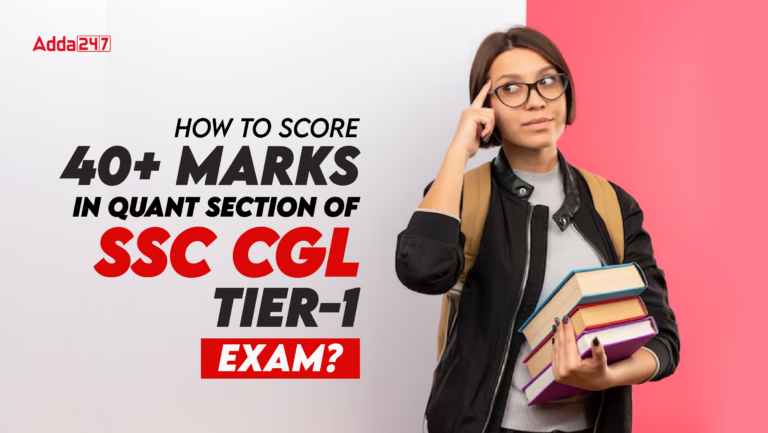

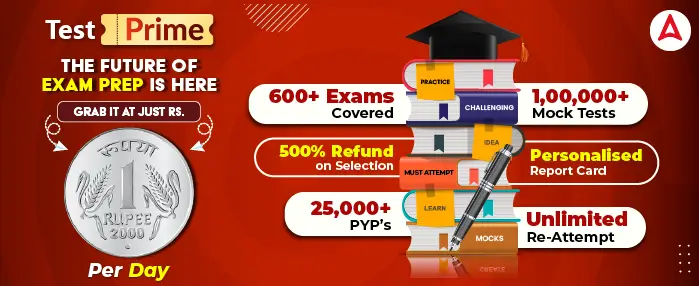
 Delhi Police Slot Booking 2025 Live @ssc...
Delhi Police Slot Booking 2025 Live @ssc...
 Delhi Police Constable Self Slot Booking...
Delhi Police Constable Self Slot Booking...
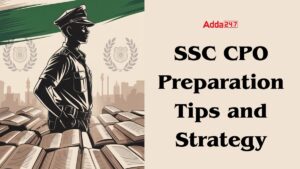 SSC CPO Preparation Tips and Strategy, H...
SSC CPO Preparation Tips and Strategy, H...

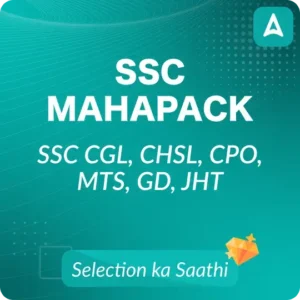
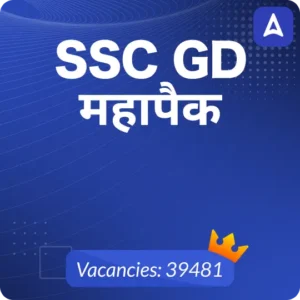
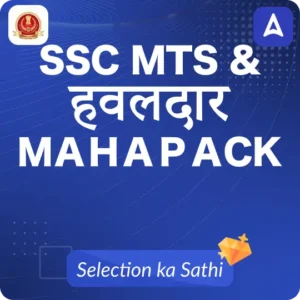
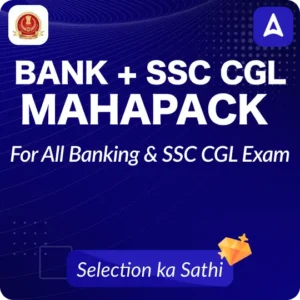
 Adda247 Job portal has complete information about all Sarkari Jobs and Naukri Alerts, its latest recruitment notifications, from all state and national level jobs and their updates.
Adda247 Job portal has complete information about all Sarkari Jobs and Naukri Alerts, its latest recruitment notifications, from all state and national level jobs and their updates.



